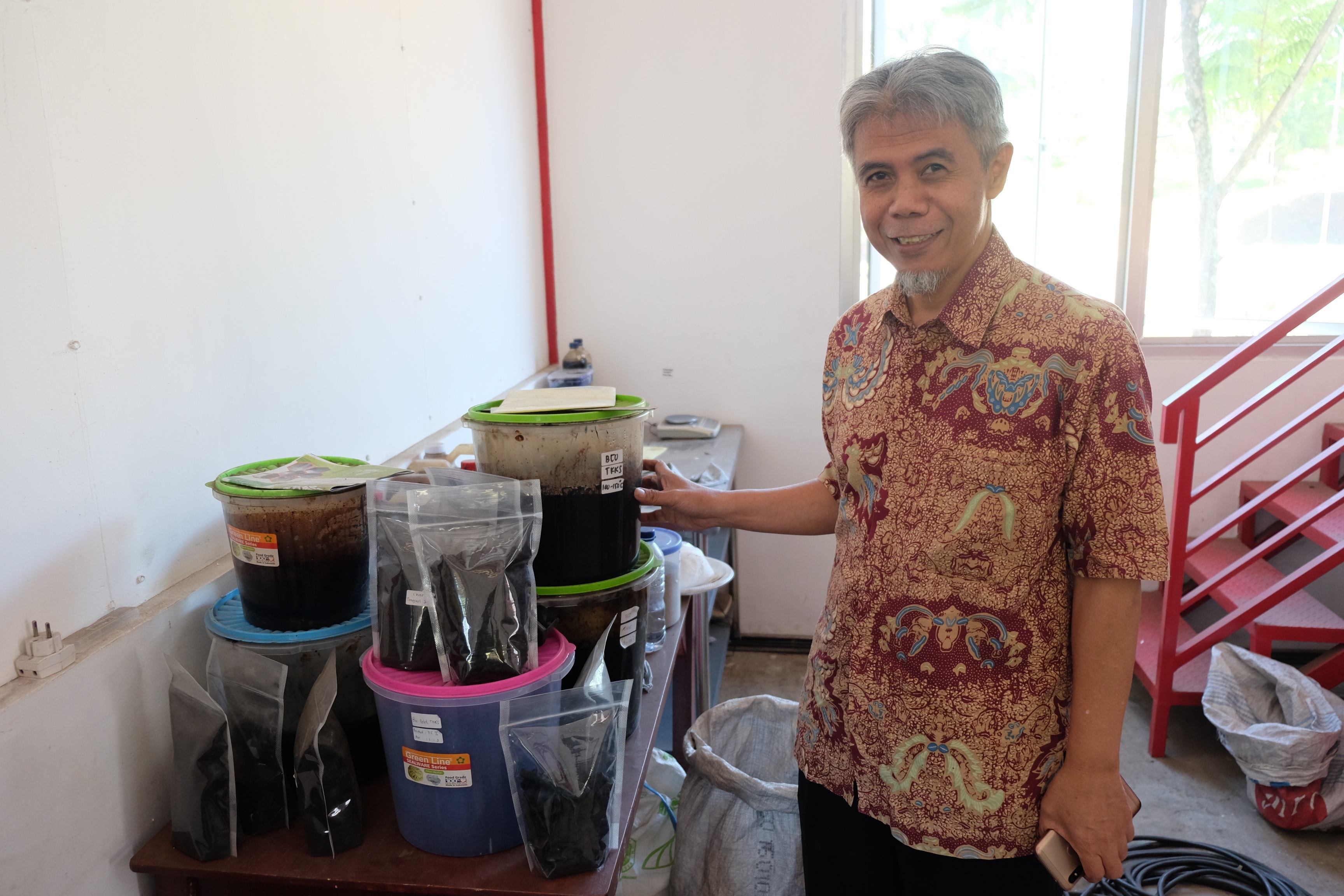Jelek!: When Architects Criticize Their Own Work
By Adi Permana
Editor Adi Permana

BANDUNG, itb.ac.id--ITB School of Architecture, Planning, and Policy Development, Architecture Program held an Open Discussion on Architecture Criticism “JELEK!”. The event in collaboration with AR ITB 2011 Alumni took place online on Saturday (8/8/2021). They held discussions to encourage the development of a healthy culture of criticism, especially in the realm of architecture. In Indonesian, "jelek" directly translates as "bad".
Several well-known architects such as Baskoro Tedjo, Kevin Mark Low, Andra Martin, and Yanuar Pratama Firdaus were present as the discussants in the event. This discussion was also attended by Arif Sarwo Wibowo as a representative of the ITB Architecture Study Program. The moderator for this discussion was Achmad D. Tardiyana, Senior Architect of Urbane Indonesia as well as a lecturer at the ITB Architecture Study Program.
Raising from the concerns about presentation of a good image of architecture in the media, this discussion tries to review the other side of an architectural work. So far, architecture is often viewed in two dimensions. The media tend to present architectural works only from the architect's point of view, so the presentations that appear are limited to the good sides.
In the first presentation, Principal Architect Aaksen Responsible Architecture Yanuar P.F. discuss "Failing Forward". Yanuar shared his story of working on architectural works, one of which was NOR House. In designing the NOR House, Yanuar admitted that he made several mistakes.
For example, the building of the house was originally designed to fulfill his ego. He also admitted that he put too much emphasis on the visual aspect compared to the ergonomic aspect of the building. "This journey made me realize that something should be made from the right principles first, so beauty will then appear when the principles are right," said Yanuar.
Together with his architectural studio partners, Aaksen, they created a book called "Aaksen Black Book" to summarize and document design mistakes that have been made.
Continuing Yanuar, renowned architect Andra Matin also criticized his personal work. When building EH House, for example, he found many unexpected things that made him need to remodel some of the design. Andra Matin realized that the implemented design was not optimal in accommodating his initial plans and the request of his client. He also realized that material selection and building maintenance often went unnoticed. Architects also need to be able to understand the client's wishes well enough to avoid design waste and comfortable use of space.
Furthermore, Andra Matin emphasized the need to discuss and admit mistakes to clients as the key to remain trusted by clients, especially to still be able to get new projects. "As an architect, I'm not a perfect person, but if we can learn to be honest and admit that we can't be perfect and try our best, hopefully it can also be appreciated by clients," he concluded.
The third presentation was continued by Baskoro Tedjo, founder of the architectural firm Baskoro Tedjo & Associate as well as lecturer at the ITB Architecture Study Program. On that occasion, he elaborated more deeply on the definitions and theories about criticism. "It is natural for architects to make mistakes," he said.
Architectural design sometimes becomes a challenge itself because what is encountered in the design tends to be different from the internalized knowledge, which is the framework of thinking or knowledge obtained from the academic process. Therefore, fantasy, creativity, and fast thinking patterns are needed along with a trial and error process (learning from mistakes) to produce a good design.
In criticizing his own architectural work (self-critique), Baskoro Tedjo explained that there are aspects that can be of concern, such as unexpected responses from users, multiple interpretations of the work, problems in building maintenance, as well as comfort and safety. He criticized several of his own works in this discussion, including the Triangle House and ITB Campus Center. The main problems he faces mostly come from changes in the behavior of building users (unpredictable responses).
Kevin Mark Low, an architect from Malaysia who works under the architectural firm Small Projects, also shared his experience of failure in designing. Kevin ranks five aspects of architectural design errors in priority, starting from operations, construction, building organization, contextual design, to aesthetics. The first work he criticized was the Windshell Naradhiwas. In this work, Kevin realized that his ambition and focus on aesthetics were actually thwarting the operational side of the design itself.

Furthermore, in the BritishIndia Headquarters project, Kevin again found problems in the operations and even the organization of his buildings due to his obsession with design aesthetics. The emphasis on aesthetics in the Cross of the Revival project also led to a failure to understand the context of the design needs.
In the discussion session, the four architects who were the speakers in this discussion each emphasized again that in criticizing architectural works, aesthetics should not be the most critical aspect. Aesthetics is something that can be interpreted by each individual differently. Therefore, to build a healthy culture of criticism, other technical aspects such as operations and organization need to be the main concern in architectural criticism because of their clear standardization.
Reporter: Achmad Lutfi Harjanto (Perencanaan Wilayah dan Kota, 2020)
Translator: Aghisna Syifa Rahmani (Biologi, 2020)

.jpg)
.jpg)
.png)
.jpg)
.jpg)

